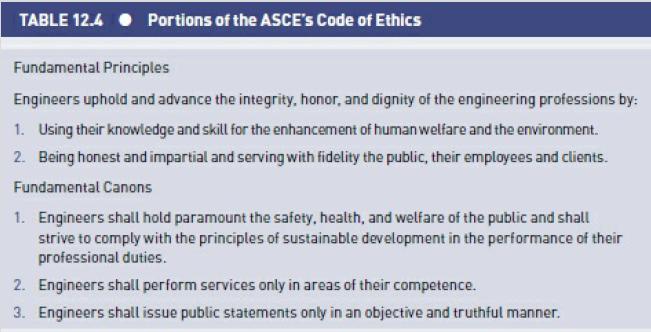On January 28, 1986, at 11:38 a.m., the space shuttle Challenger was launched. The evening before the
Question:
On January 28, 1986, at 11:38 a.m., the space shuttle Challenger was launched. The evening before the launch, the temperature at the launch site had dropped to 18 degrees. It was also estimated to be near or below freezing when the Challenger actually launched. Seventy-three seconds after the launch, the Challenger exploded, killing all seven astronauts. If that were not tragic enough, it is more tragic to realize that those astronauts did not need to die. The cause of the explosion was a small rubber sealant called an O-ring. The O-rings are used to aid in the attachment of the different sections of the rockets to the shuttle. The O-rings were manufactured by Morton Thiokol (MTI). Both MTI and the National Aeronautics and Space Administration (NASA) knew there were problems with the O-rings at low temperatures. The rubber becomes stiff and brittle as the temperature decreases and, therefore, cannot flex back into place as the thrust from the rockets moves through the different components of the rockets. As a result, there was a real concern that the O-rings would fail for the Challenger launch because of the freezing temperature. However, there was immense pressure on NASA to launch because the launch had already been postponed, and Congress was threatening to reduce NASA’s funding unless it started getting shuttles in the air. In addition, the day of the launch, President Ronald Reagan was going to read his State of the Union address on prime-time television and wanted to mention the success of the shuttle program. The first teacher in space, Christa McAuliffe, had scheduled to have a lesson in space, and without the launch, the schedule would not work for the lesson. There was also pressure from MTI officials to launch because it wanted to support NASA because NASA was a very important customer for MTI’s financial stability. When the engineers from NASA and MTI met the evening before the launch to make the final decision, MTI engineers wanted to vote for a “no launch” because they had a difficult time quantifying the decision because no data had been collected from a launch at this low temperature. NASA engineers wanted to launch, but told MTI that NASA would not override MTI’s decision for “no launch.” MTI engineers believed this meant that NASA did want to launch. The MTI division head then told the MTI engineers to put on their “management hat” instead of their “engineering hat.” This meant they needed to look at this decision not on safety issues but on how much revenue this would cost MTI if NASA no longer used them as a supplier. MTI and NASA finally agreed to the launch the following morning. Table 12.4 shows a portion of the American Society of Civil Engineers Code of Ethics (ASCE). The ASCE Code of Ethics was first adopted on September 2, 1914.

Questions
1. Which stakeholders’ interests were included in the decision about whether to launch the Challenger or not? Which critical stakeholder’s voice was missing from the discussion?
2. How could the engineers separate their decision from the very real possibility that the decision would kill seven people?
3. If you were at the meeting the night before the launch, what would you do? How would you try to convince others in the room to accept or agree with your decision?
Step by Step Answer:

Understanding Business Ethics
ISBN: 9781506303239
3rd Edition
Authors: Peter A. Stanwick, Sarah D. Stanwick





